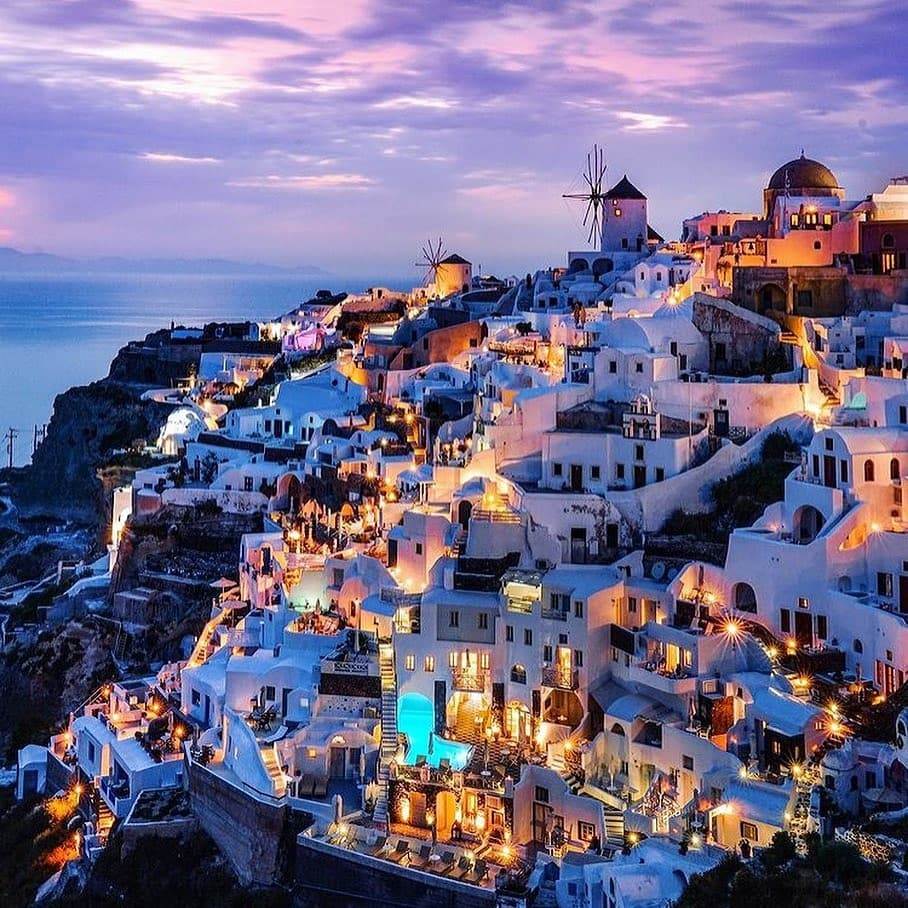
You are using the Free Edition of SantoriniAPP. For extensive information on Santorini, GO PRIME with our comprehensive Greek Travel App featuring the full editions of Santorini and 25 more Greek islands & Athens.

Crescent-shaped [eafl id=”1348″ name=”santorini” text=”Santorini”] (or Thíra), the precious gem of the Aegean, is actually a group of islands consisting of Thíra, Thirassiá, Asproníssi, Palea and Nea Kaméni in the southernmost part of Cyclades. Did you know that this whole complex of islands is still an active volcano, and probably the only volcano in the world whose crater is in the sea? The islands that form Santorini came into existence as a result of intensive volcanic activity; twelve huge eruptions occurred, one every 20,000 years approximately, and each violent eruption caused the collapse of the volcano’s central part creating a large crater (caldera). The volcano, however, managed to recreate itself over and over again.
The last big eruption occurred 3,600 years ago (during the Minoan Age), when igneous material (mainly ash, pumice and lava stones) covered the three islands (Thíra, Thirassiá and Asproníssi). The eruption destroyed the thriving local prehistoric civilization, evidence of which was found during the excavations of a settlement at Akrotíri. The solid material and gases emerging from the volcano’s interior created a huge “vacuum” underneath, causing the collapse of the central part and the creation of an enormous “lagoon” –today’s Caldera– with a size of 8×4 km and a depth of up to 400m below sea level. In the centre of the lagoon are two active volcanic islets, Néa Kaméni (“New Burnt Island”) and Palaía Kaméni (“Old Burnt Island”).
The lagoon is rimmed by dramatic red, white, and black-striped volcanic cliffs rising to almost 1,000 feet (300 metres). The summit of Thera is the incredible 1,857-foot (566-metre) limestone Mount Profítis Ilías in the southeast.
The small island cradles a rich variety of landscapes and villages and has one natural source of fresh water, a small spring situated in a cave behind a small chapel located halfway up the steep footpath between Kamari and the entrance to Ancient Thira. This spring only provides a small quantity of water; however, it is of good quality as it comes from the only remaining limestone outcrop of the pre-volcanic island. Prior to the early 1990’s, it was necessary for water to be delivered to the island via tanker from Crete. Now most hotels and homes have access to water provided by a local desalination plant. While this water is potable, it is still rather salty, so most visitors drink bottled water while in Santorini.

You are using the Free Edition of SantoriniAPP. For extensive information on Santorini, GO PRIME with our comprehensive Greek Travel App featuring the full editions of Santorini and 25 more Greek islands & Athens.